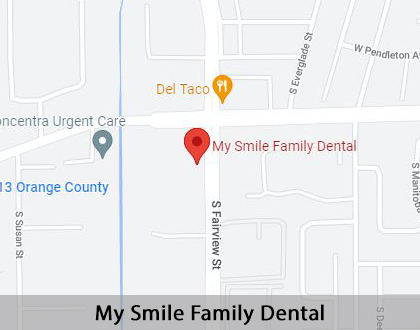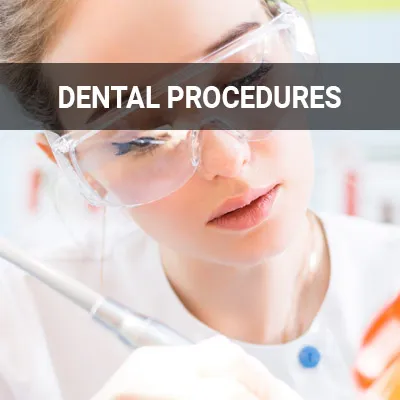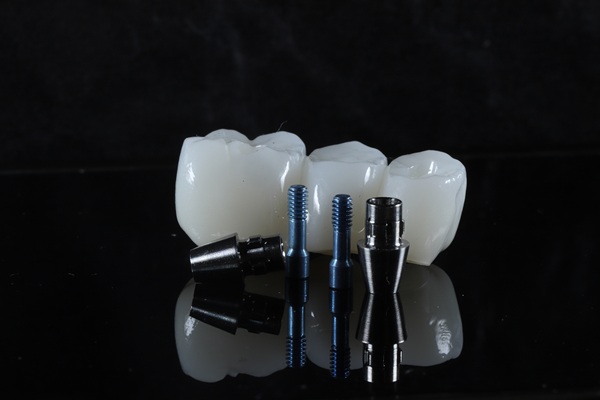Root Scaling and Planing Santa Ana, CA
Patients with gum disease can benefit from root scaling and planing. This treatment is a key part of restoring healthy gums and teeth. Root scaling and planing treatments can combat the harmful effects of gum disease and keep your mouth healthy.
Root scaling and root planing treatments are available at My Smile Family Dental in Santa Ana and the surrounding area. Our team can help improve your oral health. Call us at (714) 408-4343 to learn more about our services or schedule an appointment.
An Overview of Root Scaling and Planing
Root scaling is a periodontal treatment that deep cleans the gums. This treatment is more extensive than the routine cleaning during a regular dental check-up. We will remove all plaque, bacterial toxins, and tartar deposits from the teeth and root surfaces during the procedure. A dental scaler or ultrasonic instrument can also assist in clearing the bacterial buildup.
For even deeper cleaning, patients can also have a root planing treatment. During root planing, we will clean under the gum line to remove plaque and tartar. The root surface of the gums is smoothed and treated to keep gum disease from progressing. These non-surgical procedures aim to remove bacteria from the gum and root with patients with deep periodontal pockets.
” These non-surgical procedures aim to remove bacteria from the gum and root with patients with deep periodontal pockets.”
When To Receive Root Scaling and Planing
We recommend root scaling and root planing to combat chronic periodontal disease, also known as gum disease. Patients with receding gums can also benefit from this treatment. During a routine dental examination, we will assess the patient’s gum line and periodontal pockets. Deep pockets may indicate signs of periodontal disease and necessitate root scaling or planing.
Without root scaling or root planing treatment, people with periodontal disease can suffer additional oral and overall health problems. Eventually, the bacteria from diseased gums can lead to receding gums, tooth loss, bone loss, or loose teeth. Root scaling and planing can help repair some of the damage and prevent further gum damage. Additional treatments may be necessary in cases where the periodontal pockets have become deeper.
“Without root scaling or root planing treatment, people with periodontal disease can suffer additional oral and overall health problems.”
A Breakdown of the Procedure
Depending on the severity of the situation, root scaling and planing treatments may be broken up into multiple appointments. These procedures are done on an outpatient basis. Patients may or may not need a local anesthetic to numb the treatment site. We may focus on certain parts of the mouth during each appointment instead of treating the entire area in one visit.
Root scaling occurs before root planing. We will scrape plaque deposits from the teeth and in the large pockets between the gums during root scaling. During root planing, we will go deeper into the gum line to remove bacteria and plaque. We will smooth out the roots deep within the gum line, clearing off tartar build-up and bacteria. At the end of the procedure, the gums and mouth are flushed with water to remove any remaining loose residue or bacteria.
“Depending on the severity of the situation, root scaling and planing treatments may be broken up into multiple appointments.”
Check out what others are saying about our dental services on Yelp: Root Scaling and Planing in Santa Ana, CA
Benefits and Drawbacks of Root Scaling Treatment
One of the biggest benefits of root scaling and root planing is that it helps prevent further gum disease. After treatment, patients will have cleaner mouths with fewer gum problems and cavities. Healthier gums feel less tender and will not bleed while flossing or brushing.
Root scaling and planing may not be the best treatment option for everyone. Patients who do not commit to excellent oral hygiene habits may not see as many benefits in the future. Additionally, immunocompromised individuals or patients with severely receding gums may not be candidates for the treatment.
“One of the biggest benefits of root scaling and root planing is that it helps prevent further gum disease.”
Treatment Aftercare
Gum sensitivity is normal during the first few days after this deep cleaning treatment. The gums may be tender, swollen, and even bleed. We recommend that patients gently brush their teeth and use wax-coated floss. They should also periodically rinse their mouth with warm salt water or an oral rinse to prevent infection.
A follow-up appointment is necessary so that we can check for gum improvement. If the gums are firm and pink again and the pockets are smaller, patients may not need further treatment. People can then schedule regular dental check-ups to maintain gum and oral health.
“If the gums are firm and pink again and the pockets are smaller, patients may not need further treatment.”
Questions Answered on This Page
Q. What are root scaling and root planing?
Q. When are root scaling and root planing necessary?
Q. What happens during a typical root scaling and root planing procedure?
Q. What are the benefits and drawbacks of root scaling?
Q. What aftercare should occur after treatment?
People Also Ask
Frequently Asked Questions
Q. Will root scaling or planing loosen teeth?
A. While the treatment tool will clean under the gum line, the procedure will not impact the teeth’s position. The teeth will not loosen after treatment. However, ignoring gum health and not removing plaque can adversely impact gum health and lead to issues, such as gingivitis and loose teeth.
Q. What is the dental plaque that is removed during root planing?
A. Dental plaque is the film that coats the teeth and gums that consists of saliva and bacteria. Brushing and flossing may remove some of the plaque, but plaque can also harden and turn into tartar. Routine cleanings are necessary to remove tartar buildup.
Q. How long does root scaling take?
A. Root scaling and planing are typically spread out over multiple appointments. The provider may determine which parts of the mouth will be treated during each appointment. Often, root scaling and planing can occur in a single one or two-hour appointment.
Q. What are the types of dental tools used during root scaling?
A. Some providers use a mirror and a scaler to scrape off the tartar by hand. In other cases, the providers may opt for a more convenient ultrasonic tool to remove the tartar. The ultrasonic instrument also uses water to help make tartar removal easier.
Q. What can I eat after root scaling or planing?
A. Patients should wait about two hours to eat after the procedure. We recommend sticking with soft, mild foods for a few days after treatment. Patients should avoid crunchy or hard foods and anything spicy. This can help prevent further irritation or discomfort in the gums and teeth.
Quality Dental Services Can Transform Your Smile
By visiting us as soon as possible, our team can help get you the professional treatment you need. Instead of waiting around and allowing the symptoms to get worse, we can provide you with treatment options.
Periodontic Terminology
Call Us Today
If you have gum disease, root scaling and planing can help reverse this issue. Our team at My Smile Family Dental can help. Call us today at 714-408-4343 to learn more about our services or schedule an appointment.
Helpful Related Links
- American Dental Association (ADA). Glossary of Dental Clinical Terms. 2021
- American Academy of Cosmetic Dentistry® (AACD). Home Page. 2021
- WebMD. WebMD’s Oral Care Guide. 2021
About our business, license, and website security
- My Smile Family Dental was established in 2015.
- We accept the following payment methods: American Express, Cash, Check, Discover, MasterCard, and Visa
- We serve patients from the following counties: Orange County
- We serve patients from the following cities: Santa Ana, Fountain Valley, Costa Mesa, Irvine, Tustin, and Anaheim
- CA (License #64449). View License Information and Specifics
- National Provider Identifier Database (1245643154). View NPI Registry Information
- Healthgrades. View Background Information and Reviews
- Norton Safe Web. View Details
- Trend Micro Site Safety Center. View Details
Back to top of Root Scaling and Planing











